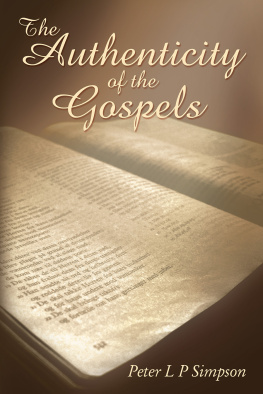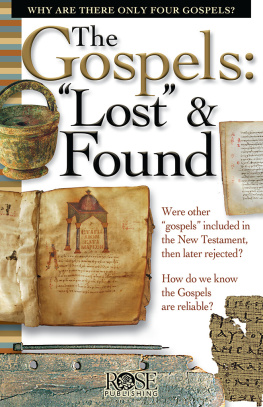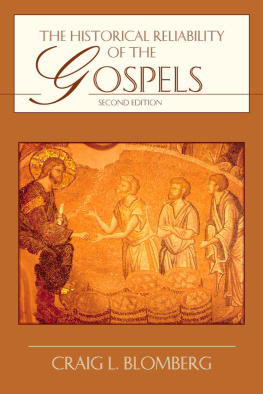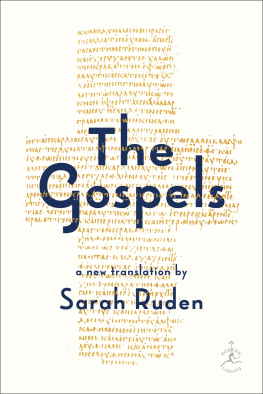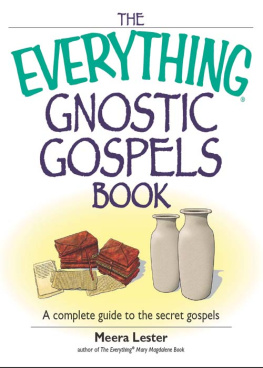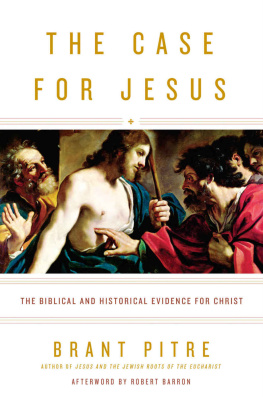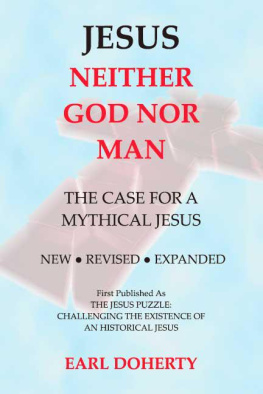Lydia McGrew is a champion of the argument from undesignundesigned coincidences, that is. She is talking about cases in the Gospels and Acts where some event finds its explanation in some other, independent document of the New Testament. Given the relevant independence of the accounts, for which McGrew argues, the coincidence of the accounts cannot plausibly be dismissed as accidental but must be rooted in the actual events which are described in the accounts. Some of McGrews examples are truly impressive, for example, the independent explanation of the charges brought against Jesus at his trial before the Sanhedrin that he would destroy the Temple and raise it up in three days. Readable and entertaining, as well as instructive, this book is well worth the read.
William Lane Craig, Professor of Philosophy,
Talbot School of Theology; Houston Baptist University
Lydia McGrew thinks outside the box of much contemporary biblical scholarship to highlight the ways in which one Gospel completely in passing and therefore almost certainly inadvertently explains a question that other Gospels raise but leave unanswered by gaps in their narratives. Then she does the same with the Acts of the Apostles and the letters of Paul. She is scarcely the first to have noticed these coincidences but is one of the few in the twenty-first century to highlight them. Her work thus forms one more important plank in the ever-growing platform for the reliability of the New Testament, since these connections are far too subtle, consistent and true to what we know of the first-century to be fictitiously created.
Craig L. Blomberg, Distinguished Professor of the
New Testament, Denver Seminary
Given the myriads of challenges that recent critical scholars bring against various aspects of the New Testament text, different approaches to the reliability of the Gospels and Acts are always welcome. Lydia McGrew has opened a window into Eighteenth and Nineteenth Century apologetics by reintroducing the concept of undesigned coincidences, showing how different passages can complement each other in ways that support their historicity. Like puzzle pieces, these seemingly hidden and often common, everyday pieces of information help to explain each other, thereby providing factual support. I recommend this well-written and exceptionally informative volume for the believer who desires another apologetic arrow in their quivers.
Gary R. Habermas, Distinguished Research Professor,
Liberty University and Theological Seminary
Those who defend the reliability of the New Testament Gospels have many arguments available. My favorite is to show how admirably the biblical documents find correlation in the established facts of the ancient world. But now Lydia McGrew has unearthed a type of evidence so old that it is newthe evidence of undesigned coincidences. The Gospels interlock with one another, and the book of Acts interlocks with the Pauline epistles, in ways that give evidence that the authors were well informed and truthful. Both those who defend the faith and those who oppose it will have to take these original and welcome insights very seriously.
Paul Maier, Professor emeritus of History,
Western Michigan University; Author of In the Fullness of Time
The value of this books observations is not their novelty but their cumulative effectiveness as an argument. Here then is a valuable and accessible approach for recognizing significant historical information in the Gospels that does not simply repeat arguments that most of us have already heard. I have learned much from, and expect McGrews other readers to learn much from, her revival of this important but neglected argument.
Craig Keener (from Foreword), F. M. and Ada Thompson
Professor of Biblical Studies, Asbury Theological Seminary
Hidden in Plain View is an intriguing, clearly-written argument for the historical claim that the four Gospels and the book of Acts were all written by authors who were eyewitnesses or close associates of eyewitnesses. McGrew points out evidence that is indeed in plain view since it requires no special historical or linguistic expertise to understand, though it is subtle enough to require a sharp investigative mind to discern. She shows there are good reasons to believe that the theological and evangelistic ends of these Biblical writers are fully consistent with aims to tell a story that is historically reliable. Although this type of argument goes back at least to William Paley, it has been largely forgotten. McGrew has done us a great service by showing us how to find evidence that is easy to miss even though it is right before the readers eyes.
C. Stephen Evans, University Professor of Philosophy and Humanities, Baylor University; Professorial Fellow, Logos Institute for Analytic and Exegetical Theology, University of St. Andrews
Often the incidental details in a narrative are what convince modern critics that the ancient writer is telling the truth. When these details exhibit verisimilitude, that is, agree with the realities of the past, we give the ancient source the benefit of the doubt. In Hidden in Plain View Lydia McGrew shows that apparent discrepancies often point to independent and reliable contact with the actual events of the Jesus story. What we have here is yet additional evidence of the verisimilitude of the New Testament Gospels.
Craig A. Evans, John Bisagno Distinguished Professor of Christian Origins, Houston Theological Seminary; Houston Baptist University
Typical defenses for the reliability of the Gospels and Acts rely upon manuscript authority, archaeological evidence, and arguments for genuineness of the eyewitness accounts of the respective writers. All these are valid and important. But with the release of Hidden in Plain View, Lydia McGrew (re)introduces us to a forgotten but powerful piece of evidenceundesigned coincidences, as she calls them. Even though I have been teaching and writing in the field of apologetics for nearly two decades, many of her arguments were new to me. And I find them very convincing. This book is not only a must-read for Christians who care about the reliability of the New Testament, but it is a book genuine seekers would benefit from reading as well. My thanks to Lydia for her hard work and important contribution.
Sean McDowell, Biola University; Author of The Fate of the Apostles
Keep this book at the ready. It contains some interesting hidden gems, and God may use these overlooked pieces of evidence to persuade someone you know to take the Gospels seriously.
J. Warner Wallace (from Afterword), Cold Case Detective;
Adjunct Professor of Apologetics, Biola University
Hidden in Plain View takes many almost seemingly aside remarks and shows how they are connected to things said elsewhere in Scripture. It is an intriguing concept, executed well. The result is not only a fascinating read but a deeper appreciation for the connections Scripture makes.
Darrell L. Bock, Senior Research Professor of
New Testament Studies, Dallas Theological Seminary
Though Ive studied Christian apologetics for almost four decades and have written several apologetic works, I must confess that I never took the argument from undesigned coincidences very seriously until I read this book. I was pleasantly surprised by the compelling cumulative case Lydia McGrew makes for the historical veracity of much of the New Testament on this basis. All who want to be prepared to give a rational defense of their hope in Christ (I Pet 3.15) ought to include this well-written and powerfully argued book in their apologetic toolbox.
Greg Boyd, Senior Pastor, Woodland Hills Church (Maplewood MN);
President, ReKnew Ministries ( ReKnew.org ); Co-Author of The Jesus Legend
With her argument from undesigned coincidences, Lydia McGrew revives a long-neglected line of consideration that, taken as a cumulative case, supports the historical reliability of key New Testament documents. Among the reasons for the contemporary neglect of this argument are various conclusions drawn from source, form, and redaction criticism that have fostered a general air of skepticism surrounding these writings. However, these forms of literary criticism were the product of a highly literate, post-Gutenberg world, and all too often have been anachronistically applied to ancient biblical texts born in an orally dominant context. When viewed from a perspective sensitive to the oral dynamics at work within the biblical texts themselves, one can begin to more fully appreciate the insights and cumulative force of McGrews proposal.
Next page

